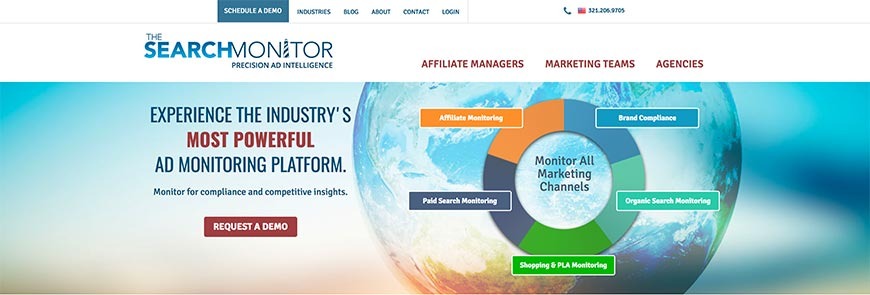SEO Wars: Perspectives on Its Role in Online Profitability explores the evolution and strategic importance of SEO in today's digital marketing landscape. The article delves into the integration of SEO with other marketing efforts, the significant return on investment it offers, and the various perspectives from businesses, marketers, consumers, and search engines. It covers essential aspects like on-page and off-page SEO, the role of content, technical SEO, local SEO, e-commerce optimization, and the use of SEO tools and analytics. The discussion includes common challenges, successful case studies, and insights into the future of SEO, emphasizing AI, machine learning, and voice search. This comprehensive guide highlights SEO's crucial role in driving online profitability and sustaining competitive advantage.
# SEO Wars: Perspectives on Its Role in Online Profitability
## Table of Contents
1. Introduction
2. The Evolution of SEO
– Early Days of SEO
– The Impact of Algorithm Changes
– Modern SEO Practices
3. The Strategic Importance of SEO
– SEO and Digital Marketing Integration
– ROI of SEO
4. Perspectives on SEO
– Businesses
– Marketers
– Consumers
– Search Engines
5. On-Page vs. Off-Page SEO
– On-Page SEO Elements
– Off-Page SEO Techniques
6. Content and SEO
– The Role of Content in SEO
– Content Marketing Strategies
7. Technical SEO
– Website Architecture
– Mobile Optimization
– Page Speed
8. Local SEO
– Importance for Small Businesses
– Strategies for Local SEO
9. E-commerce and SEO
– Product Page Optimization
– The Role of Reviews and UGC
10. SEO Tools and Analytics
– Popular SEO Tools
– Measuring SEO Success
11. Common SEO Challenges
– Algorithm Updates
– Competition
– Black Hat Techniques
12. Case Studies
– Successful SEO Campaigns
– Lessons from Failures
13. Future of SEO
– AI and Machine Learning
– Voice Search
– Evolving User Behavior
14. Conclusion
—
## 1. Introduction
Search Engine Optimization (SEO) has undergone a transformative journey since the inception of the internet. Initially seen as a technical component relegated to the sidelines of digital marketing, SEO has evolved into a crucial strategy that can significantly influence a business's online profitability. The ongoing battle to rank at the top of search engine results pages (SERPs) is what we refer to as the “SEO Wars.” This article delves into the various perspectives on SEO, its evolution, and its indispensable role in enhancing online profitability.
## 2. The Evolution of SEO
### Early Days of SEO
In the early days of the internet, the concept of SEO was rudimentary and unstructured. Webmasters would stuff keywords into web pages, often sacrificing readability and user experience, to rank higher on search engines like AltaVista and Yahoo. The lack of sophisticated algorithms made it relatively easy to manipulate search results.
### The Impact of Algorithm Changes
The introduction of Google's PageRank algorithm in 1998 marked a significant shift in SEO. This algorithm considered the quality and quantity of links pointing to a webpage, making link-building a central aspect of SEO strategies. Subsequent algorithm updates, such as Panda, Penguin, and Hummingbird, focused on content quality, penalizing keyword stuffing, and promoting user-centric content. These changes forced SEO practitioners to adopt more ethical and user-focused strategies.
### Modern SEO Practices
Today, SEO is a multi-faceted discipline that encompasses on-page optimization, content marketing, technical SEO, and off-page strategies like link-building and social media engagement. The modern SEO landscape requires a balanced approach, combining technical expertise with creative content strategies to achieve sustainable results.
## 3. The Strategic Importance of SEO
### SEO and Digital Marketing Integration
SEO is no longer an isolated practice; it is integrated with various digital marketing strategies, including content marketing, social media, and pay-per-click (PPC) advertising. This integration ensures a cohesive approach to online visibility and brand building. A well-executed SEO strategy enhances the effectiveness of other marketing efforts, driving organic traffic and improving overall ROI.
### ROI of SEO
The return on investment (ROI) of SEO is a critical consideration for businesses. Unlike paid advertising, SEO offers long-term benefits. High rankings in organic search results provide sustained visibility and traffic, reducing dependency on continuous ad spend. Studies have shown that SEO can deliver higher conversion rates compared to other digital marketing channels, making it a cost-effective strategy for long-term profitability.
## 4. Perspectives on SEO
### Businesses
From a business perspective, SEO is a vital component of digital strategy. Companies invest heavily in SEO to improve their online presence, attract potential customers, and ultimately drive sales. Successful SEO campaigns can lead to significant revenue growth, brand recognition, and competitive advantage.
### Marketers
Marketers view SEO as a dynamic and ever-evolving field that requires continuous learning and adaptation. The complexity of SEO, coupled with frequent algorithm updates, presents both challenges and opportunities. For marketers, staying ahead in the SEO game involves staying informed about industry trends, experimenting with new techniques, and refining strategies based on data-driven insights.
### Consumers
Consumers are indirectly impacted by SEO, although they may not always be aware of it. SEO ensures that search engines deliver relevant and high-quality content to users. By prioritizing user experience, SEO helps consumers find the information they need quickly and efficiently. The growing emphasis on mobile optimization and voice search further enhances the user experience, making online interactions more seamless and intuitive.
### Search Engines
For search engines, SEO is essential in fulfilling their primary goal: delivering the most relevant and valuable results to users. Search engines continually refine their algorithms to combat spam, improve search accuracy, and enhance user satisfaction. They provide guidelines and resources to help webmasters and marketers understand and implement effective SEO practices.
## 5. On-Page vs. Off-Page SEO
### On-Page SEO Elements
On-page SEO involves optimizing individual web pages to rank higher and earn more relevant traffic in search engines. Key elements include:
– **Title Tags:** Crafting compelling and keyword-rich titles.
– **Meta Descriptions:** Writing informative and enticing meta descriptions.
– **Headings:** Structuring content with H1, H2, and H3 tags.
– **Content:** Creating high-quality, relevant, and keyword-optimized content.
– **URL Structure:** Designing clean and descriptive URLs.
– **Internal Linking:** Establishing a logical internal linking structure.
### Off-Page SEO Techniques
Off-page SEO focuses on improving a website's authority and reputation through external efforts. Key techniques include:
– **Link Building:** Acquiring high-quality backlinks from reputable sites.
– **Social Media Marketing:** Promoting content and engaging with users on social platforms.
– **Influencer Outreach:** Collaborating with influencers to boost brand visibility.
– **Guest Blogging:** Writing articles for other websites to earn backlinks and exposure.
– **Online Reviews:** Encouraging positive reviews on platforms like Google My Business.
## 6. Content and SEO
### The Role of Content in SEO
Content is the cornerstone of effective SEO. High-quality, relevant, and engaging content attracts visitors, encourages sharing, and earns backlinks. Search engines prioritize websites that consistently publish valuable content, making content creation a critical aspect of SEO strategy.
### Content Marketing Strategies
Successful content marketing involves:
– **Keyword Research:** Identifying relevant keywords and topics.
– **Content Planning:** Developing a content calendar to ensure consistent publishing.
– **Content Creation:** Producing various types of content, including blog posts, infographics, videos, and e-books.
– **Content Promotion:** Distributing content through social media, email marketing, and other channels.
– **Content Optimization:** Regularly updating and optimizing existing content for new keywords and trends.
## 7. Technical SEO
### Website Architecture
A well-structured website is crucial for SEO. It involves:
– **Crawlability:** Ensuring search engines can crawl and index the site.
– **Sitemap:** Creating XML sitemaps to guide search engines.
– **Robots.txt:** Managing which pages search engines can index.
– **Schema Markup:** Using structured data to help search engines understand content.
### Mobile Optimization
With the rise of mobile searches, optimizing websites for mobile devices is essential. This includes:
– **Responsive Design:** Ensuring the site adjusts to various screen sizes.
– **Mobile Usability:** Enhancing the user experience on mobile devices.
– **AMP:** Implementing Accelerated Mobile Pages for faster loading times.
### Page Speed
Page speed is a critical ranking factor. Strategies to improve page speed include:
– **Minimizing HTTP Requests:** Reducing the number of elements on a page.
– **Optimizing Images:** Compressing and resizing images.
– **Leveraging Browser Caching:** Storing static files locally in the user's browser.
– **Reducing Server Response Time:** Improving the efficiency of the server hosting the site.
## 8. Local SEO
### Importance for Small Businesses
Local SEO is vital for small businesses that rely on local customers. It helps businesses appear in local search results, driving foot traffic and local sales.
### Strategies for Local SEO
Key local SEO strategies include:
– **Google My Business:** Claiming and optimizing the Google My Business listing.
– **Local Citations:** Ensuring consistent business information across directories.
– **Reviews:** Encouraging and managing customer reviews.
– **Local Content:** Creating content relevant to local events and news.
– **NAP Consistency:** Ensuring Name, Address, and Phone number are consistent across the web.
## 9. E-commerce and SEO
### Product Page Optimization
Optimizing product pages is crucial for e-commerce SEO. This involves:
– **Unique Descriptions:** Writing unique and detailed product descriptions.
– **High-Quality Images:** Using high-resolution images with alt text.
– **User Reviews:** Displaying user reviews and ratings.
– **Rich Snippets:** Implementing schema markup for product details.
### The Role of Reviews and UGC
User-generated content (UGC), such as reviews and testimonials, can significantly enhance SEO. They provide fresh content, build trust, and can improve search rankings.
## 10. SEO Tools and Analytics
### Popular SEO Tools
Several tools help with SEO efforts, including:
– **Google Analytics:** Tracking and analyzing website traffic.
– **Google Search Console:** Monitoring site performance in search results.
– **Ahrefs:** Analyzing backlinks and competitor strategies.
– **SEMrush:** Conducting keyword research and tracking rankings.
– **Moz:** Offering comprehensive SEO tools and insights.
### Measuring SEO Success
Key
metrics to measure SEO success include:
– **Organic Traffic:** The number of visitors coming from search engines.
– **Keyword Rankings:** Positions of target keywords in search results.
– **Backlinks:** Quantity and quality of incoming links.
– **Conversion Rate:** Percentage of visitors who complete a desired action.
– **Bounce Rate:** Percentage of visitors who leave the site after viewing only one page.
## 11. Common SEO Challenges
### Algorithm Updates
Search engine algorithms are constantly evolving, presenting challenges for SEO practitioners. Staying updated with changes and adjusting strategies is crucial.
### Competition
High competition in certain niches makes ranking in search results challenging. Continuous optimization and innovative strategies are required to stay ahead.
### Black Hat Techniques
Black hat SEO techniques, such as keyword stuffing and cloaking, can provide short-term gains but ultimately lead to penalties and long-term harm. Ethical SEO practices are essential for sustainable success.
## 12. Case Studies
### Successful SEO Campaigns
Examining successful SEO campaigns provides valuable insights. Case studies often highlight the importance of:
– **Comprehensive Keyword Research:** Identifying and targeting the right keywords.
– **Quality Content Creation:** Producing valuable and engaging content.
– **Effective Link Building:** Acquiring high-quality backlinks.
### Lessons from Failures
Analyzing failed SEO campaigns can reveal common pitfalls, such as:
– **Over-Optimization:** Excessive keyword use and manipulative practices.
– **Ignoring User Experience:** Prioritizing search engines over users.
– **Lack of Adaptation:** Failing to adjust strategies in response to algorithm updates.
## 13. Future of SEO
### AI and Machine Learning
AI and machine learning are transforming SEO. Search engines use these technologies to better understand user intent and deliver more accurate results. SEO practitioners must leverage AI tools and techniques to stay competitive.
### Voice Search
Voice search is becoming increasingly popular, changing how people search for information. Optimizing for voice search involves focusing on natural language queries and long-tail keywords.
### Evolving User Behavior
As user behavior continues to evolve, SEO strategies must adapt. Understanding user intent, preferences, and search patterns will be crucial for future SEO success.
## 14. Conclusion
The role of SEO in online profitability is undeniable. As the digital landscape continues to evolve, businesses must stay informed about SEO trends and best practices. The ongoing “SEO Wars” represent the dynamic and competitive nature of the field, where continuous learning and adaptation are key to achieving and maintaining online success.
—
SEO remains a vital component of digital marketing, driving organic traffic, enhancing user experience, and ultimately contributing to online profitability. By understanding the various perspectives on SEO and implementing effective strategies, businesses can navigate the complexities of the digital world and achieve sustainable growth.











